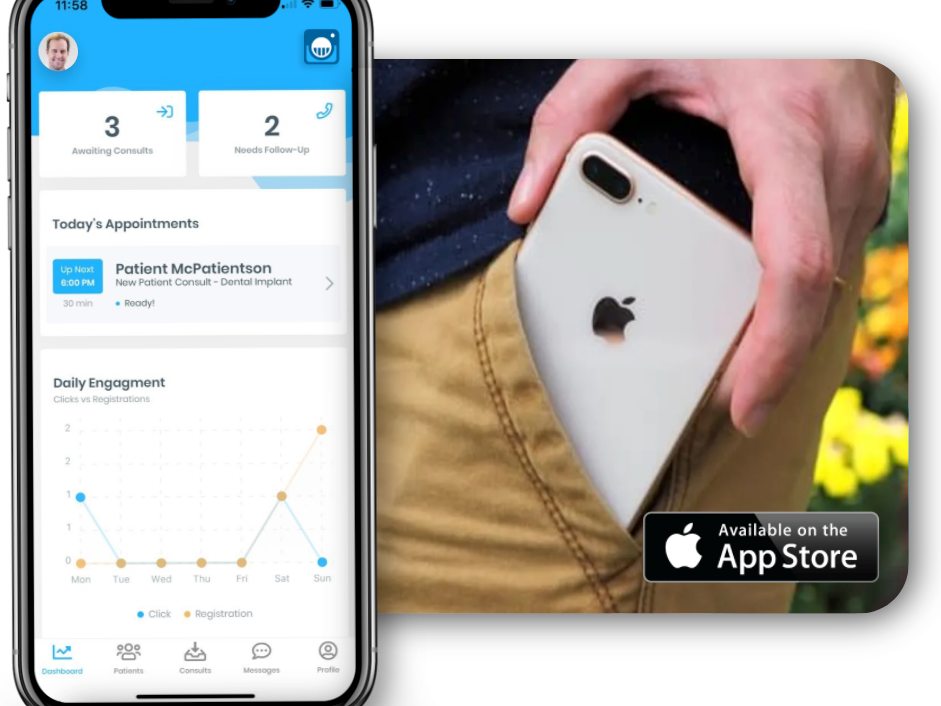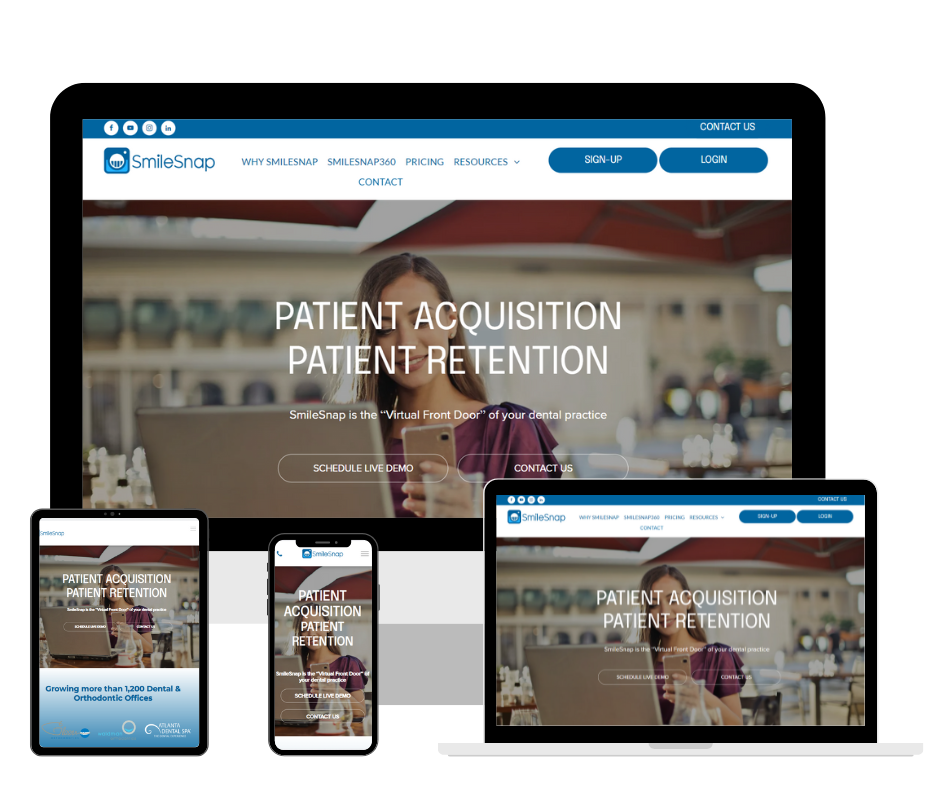6 Reasons To Use Virtual Consultations In Dentistry

The world today lives online.
This was obvious long before the current calendar year, but 2020 has really ramped up the truth of that statement. More people than ever before are socializing, shopping, entertaining themselves, and dating from the comfort of their sofas.
Consider these startling facts:
- The average smartphone user types, clicks, or
swipes their phone more than 2600 times per day - About half of smartphone users say they ”can’t live without” their smartphone
- More people in the world today own a cell phone than a toothbrush
That third fact in particular should catch your eye as a dental health care professional. It suggests people are more comfortable using apps and sending text messages than caring for their dental health. Why is that?
Certainly education has a role to play. But perhaps the reluctance among so much of the population to properly care for their dental health has something to do with the business decisions made by dental professionals. Simply put, what if the way you’ve been taught to acquire new patients is perfectly designed for a world going extinct?
More importantly: What if there was a better way?
1. Follow the leaders
Think about the biggest ”movers and shakers” in some of the major industries over the last couple of decades. Which companies have disrupted the status quo and forever changed the way business is done in a particular market? Think about:
- Netflix knocking out Blockbuster
- Peloton providing at-home workout experiences
- Door Dash delivering the restaurant to your doorstep
- TelaDoc providing remote care and consultations to patients
And the list goes on! One thing all these companies have in common is their dedication to meeting people where they are in 2020. There’s no denying the way we engage with service providers has changed forever. Every business that wants to remain relevant – dental practices included – must change as well.
2. Divinely discontent
”Sure,” you might be saying, ”That sounds great in theory. But how do I go about disrupting the status quo on a practical level?”
That’s a fair question! The answer is that, although the particulars of how you satisfy the demands of 2020’s ”new consumers” will look different than it does for Netflix or Door Dash, you can glean some key principles from their success.
In fact, their disruptive business models might be boiled down to four primary elements:
- Personalized service
- On-demand fulfillment
- Access in real time
- Convenience (from the sofa)
Jeff Bezos has referred to the consumers who demand these elements as ”divinely discontent.” Rather than view the discontent of his customers negatively, Bezos allowed their demands to drive Amazon to ever-greater levels of customer satisfaction.
Sounds like smart business sense, doesn’t it?
By the way, it’s not just the younger generation who are driving these trends— it’s everyone. All of us have become divinely discontent, together, and there seems to be no going back.
But believe it or not, that’s not a bad thing.
3. The benefits of becoming better
So dental health care practitioners are faced with the challenge of ”getting up to speed” with some other major industries. And like any growth period, there are hurdles to overcome and mindsets to adjust.
Change feels uncomfortable— as it always does.
But with change comes the opportunity to update one’s thinking in a positive way. What if you used this opportunity to change how you think about your practice?
What if you shifted your practice’s focus entirely to your patients and began to think of your practice as ”wherever the patient is?” This would mean your practice included:
- Your physical office
- Anywhere you appear online
- On your patient’s smartphone
Such a shift in your thinking could have major benefits for the way your practice markets itself, functions as a business, and cares for the people in your community. Plus, you’d be laying the groundwork for the adoption of new, game-changing technology solutions.
Sign Up for SmileSnap Today!
Register for Smilesnap Now!


